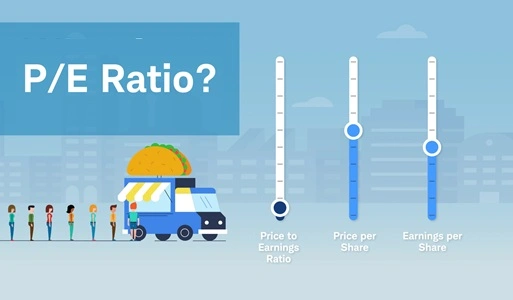Unlocking Investment Wisdom: The Role of PE Ratio in Stock Valuation
Have you ever thought how experienced investors spot a prospective multi-bagger stock or expect a company’s worth? What is PE ratio? The Price-to-Earnings ratio, or PE ratio, is one major sign they employ. In a nutshell, it’s an important stock valuation measure that compares a share’s current market price (P) with its earnings per share (E). This ratio drives buying choices and supports buyers in finding if a company is overvalued or cheap.
For instance, the PE ratio is 10 if a company’s share price is ₹15 and its earnings per share are ₹1.5. This shows that in order to buy a stake of the firm, investors are prepared to spend 10 times the earnings per share. Although there is no perfect PE ratio, generally, a proportion in the range of 20 to 25 is viewed as acceptable. In addition to the PE ratio, it is important to take into account the industry climate, management caliber, and hopes for the future.

Decoding the Numbers: Understanding Different Types of PE Ratios
The absolute PE ratio offers a fast picture of how the stock is working in comparison to its profits by dividing the current stock price by prior earnings. To find overvaluation or undervaluation, the relative PE ratio balances this absolute number with the market or business average. While forward PE studies expected future profits to help investors forecast growth and price variations, trailing PE examines past earnings to establish value. Each sort offers various details that are vital for making sensible financial choices.
Transform Your Investment Planning with the SIP Calculator
Without a well-defined goal and return plan, stock market trading can be scary. A SIP (Systematic Investment Plan) tool is useful in this case. By taking into consideration factors like the monthly SIP amount, expected rate of return, and investment time, it predicts the future worth of recurrent investments. With the help of this strong tool, investors may examine the probable maturity value and change their savings strategy correctly.
The SIP calculator allows you to simply compare alternative investment methods, play with amounts and durations, and determine how to reach certain financial goals such as retirement planning, property ownership, or paying schooling. Your financial choices will be more precise and less stressful due to the calculator’s quick, exact information.
The Magic Formula: How the SIP Calculator Works Behind the Scenes
Your monthly payment, regularity of investments, expected return rate, and length are all components in the SIP calculator’s basic yet efficient computation. It shows a picture of compound growth by estimating the total investment made and the expected gains over time. For instance, using such a calculator, you can quickly discover how much money you may gain by investing ₹5,000 a month for five years at a 12% yearly return.
More Than Just Numbers: Why SIP Calculators Empower Your Financial Journey
SIP calculators save you guesswork by measuring the time or rate of return necessary to reach financial goals in addition to expecting returns. By demonstrating how modest, regular payments may grow wealth, they promote disciplined investment and make it available to new investors. Your financial planning will be more easy and open because the calculators are usually free, simple to use, and available online at any time.
Valuation and Planning: PE Ratio Meets SIP Calculator
Selecting businesses with a fair pricing and good earning potential is made easy by applying the PE number. For long-term growth, the SIP calculator helps you in deciding how to make steady stock or mutual fund investments. When combined, they create a strong method that includes systematic planning techniques to optimize returns while controlling risks utilizing valuation measures to find assets.
The Smart Investor’s Toolkit: Combine PE Insights and SIP Forecasting for Success
For value investment, the PE ratio gives a view into whether a stock’s price and profits are in line. A SIP calculator, meanwhile, lets you arrange your regular payments and make fair predictions about future returns. Combining these tools offers buyers the knowledge and strategic abilities they need to efficiently manage the stock market and improve long-term wealth growth.


